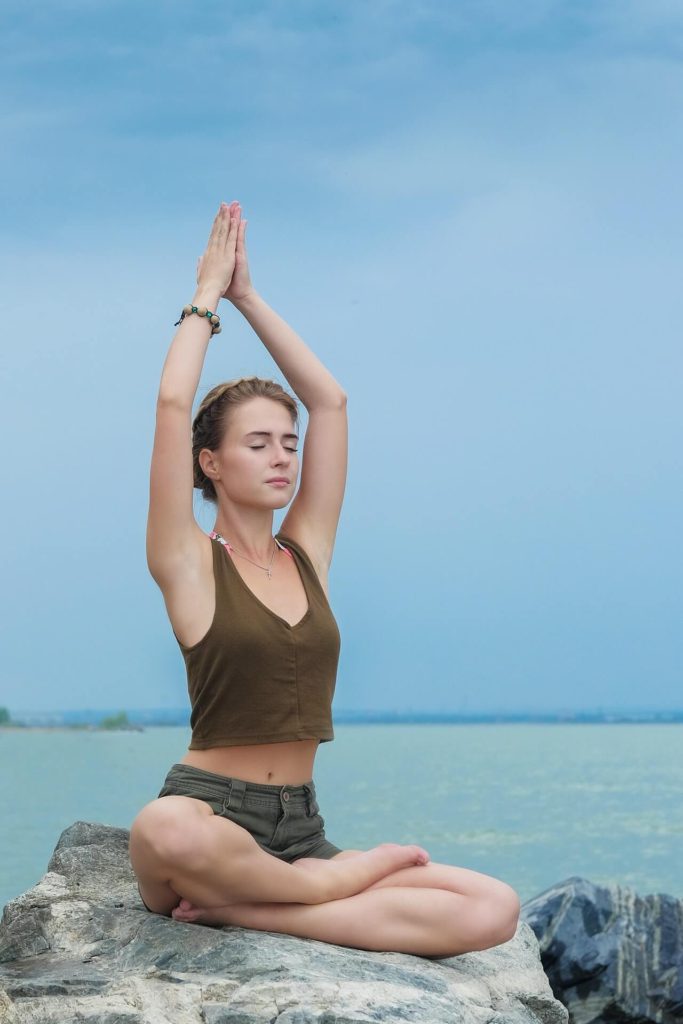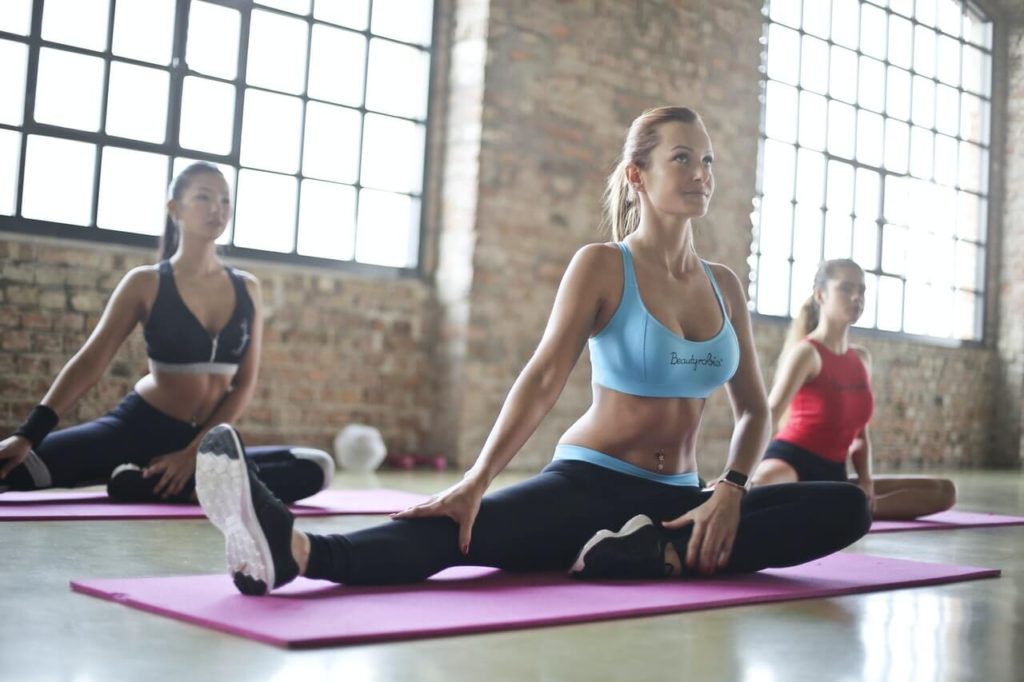HOW CAN YOGA HELP US?
Why people, old and young, rich and poor, have searched for generations for the secrets of yoga? Did their search for the ability to live longer? To get rid of stress? To be and feel healthy when reach old age? What are the best yoga poses? Is yoga another form of meditation? What is yoga?
A practice that has been on this planet for thousands of years has impacted the lives of millions of people. Whether people practice for religious purposes or fitness, yoga has been the go-to activity for many. In recent years yoga has been used to cure illnesses, tone the body, and even relax the mind. At the same time, other do yoga for fitness purposes, primarily to improve flexibility. As a matter of fact, yoga practitioners have seen a significant improvement in the flexibility of their spinal cord, hamstrings, and posture. In addition, people who suffer from body aches have noticed their pain and muscle stiffness starting to diminish after only a few yoga sessions.
MUSCLE STRENGTH
Yoga builds muscle strength. While working the whole body, stretching protects us from arthritis and back pain and even creates balance and mobility. As a result, older adults have improved mobility and equilibrium and have experienced fewer falls than people when practicing yoga regularly.
The fatigue factor of day-by-day life harms the body. Whether you are a security guard who has to stand on his feet for eight or even twelve hours a day or work in an office setting where you have to sit on your desk for eight hours a day, yoga is for you. Lousy posture for long periods causes havoc on the neck, back, muscles, and joints. Unfortunately, if you don’t address these problems in time, your spine, ribs, and ultimately your whole body can suffer for it, sentencing you to years of pain, medication, and on rare occasions, surgery. Yoga can prevent the body from deteriorating and keeps muscles, bones, and joys away from problems.
Imagine your body is this machinery, and just like the nuts and bolts that hold a car together, cartilages and joints have your body together. The secrets of yoga protect cartilages giving them the full range of motion your body needs, preventing the body from developing arthritis. But, unfortunately, these tiny cartilages and joints may break without proper exercise, causing you a lifetime of suffering and years wasted on surgeries and recovery.

YOGA AND YOUR BODY
BONES
The spine makes the body move. Every bone, in one way, is somewhat connected to the spine. If you sit for more extended periods, the ribs can herniate and compress the nerves giving your body a hell of a wrong time. The bends, the stretches, and the twists of the body that yoga gives your ribs motion relieve pressure and keeps your body refreshed and in shape. Yoga takes care takes care of your bones. People who practice daily are at much lower risk of getting osteoporosis and bone fractures. Certain poses like Downward Dog have been shown to strengthen the arms and increase bone strength.
CIRCULATION
The relaxation part of yoga improves blood circulation. Through movement, oxygen travels through the body to all extremities rejuvenating cells. Twisting poses allow cells to release toxins while invert poses oxygenate most organs, especially the heart and lungs. This flow of oxygen through the body helps reduce swelling in the arms and legs, boosting hemoglobin and red blood cells.
When the oxygen created travels to where it needs to go, the body gets rejuvenated, clot-promoting proteins dissolve, lowering the chances of stroke. In addition, while exercising organs and stretching muscles, the body increases lymph drainage, helping the body fight infections, eliminating cancerous cells, and getting rid of toxins.
Lowering the risk of a heart attack and relieving depression, yoga is good for boosting your heart rate as well. Using the heart muscles, meditation decreases the resting heart rate. Raises the endurance level of the body and maximizes oxygen intake. Minimizing the risk of a heart attack, yoga also balances blood pressure. People who used the Corpse Pose have noticed a 26-point drop in blood pressure.
HYPERTENSION
One of the many miracles of this ancients practices is the positive impact on hypertension. Practitioners have seen a decrease of significant proportion after even 20 minutes of practice. Because yoga make your heart pump blood slower than usual exercises, yogis can slow their racing hearts and bring calmness and serenity distressing the body.
CORTISOL
Unknown to many, cortisol weakens the immune system leaving the body vulnerable to viruses and illnesses. High cortisol levels also have been shown to cause depression and raise blood pressure. Also, high cortisol are linked to binge eating. This way, the body takes calories from food and stores them as fat, raising the risk of heart attack and diabetes. In other words, people who have diabetes found that yoga lowers the cortisol and adrenaline level in the body.
Yoga gives the body the endorphins necessary to increase the mood. In addition, it decreases the levels of monoamine oxide, an enzyme that hinders neurotransmitters. Studies show that meditation increases levels of happiness and improves immune function.
CALORIES
While not too many people have time to go jogging or swimming on a daily basis, you have a few minutes a day to clear your mind and center your body. The average practitioner burns between 180 and 460 calories per session, depending on their intensity level. This ancient practice also lowers blood sugar levels and eliminates bad cholesterol. While at the same time boost good cholesterol. In contrast, his ancient form of meditation encourages weight loss and sensitivity to insulin, lowers blood sugar levels, and decreases the risk of blindness.

YOGA AND YOUR MIND
This ancient practice helps you focus. Practitioners of yoga have noticed an increase in their attentiveness. As well as an improvement in coordination, reaction time, memory, and even acuteness. People who practice yoga have seen an increase in IQ and the ability to solve problems. Memory acuity also improves; people who are into yoga can focus better and get less distracted by thoughts.
Yoga relaxes the nervous system. Many practices help regulate breathing and focus on the now. Relaxing the nervous system, the patient becomes calmer, eliminates anxiety, lowers blood pressure, and increases blood flow to organs. Many people who suffer from dementia have seen a improvement after a few sessions. After just a few weeks many saw and improvement in memory recall, both verbal and visual, saw and increase in their verbal fluency, saw a improvement in executive function, and they were processing commands and thoughts at a higher rate. On a mental level practitioners found a significant decrease in boredom and stress.
When it comes to the wellness of the nervous system, yoga improve self-esteem. Just like any other exercise, people who keep their bodies in constant motion, and work toward a mental as well as physical goal are happier with themselves. Yoga is self soothing, it let’s us slow down, think about what it before us and stops us from making impulsive decisions. It give us the time to admire the beauty of our surrounding and helps us find happiness in places we never expect. In a bouquet of flowers we pass by. In the sound of an anesthesia fountain we passed by a thousand times without even notice. Beauty is everywhere if we take the time to see it.
YOGA AND BALANCE
The physical aspect of yoga has been shown to increase balance. People with poor balance and dysfunctional movements can blame their condition on knee problems and back pain. While yoga improves balance and mobility, patients – especially the elderly – have seen a significant improvement in how they walk, how they stand, and how they move. Therefore giving the elderly independence while keeping them out of nursing homes or assisting living.
The most advanced practitioners can make their hearts stop beating. While this practice is hazardous and 99% of the people who practice yoga will never get to that level. Non the less by doing exercises and focusing on breathing, the person calms their nervous system down, stops panic attacks, and eliminates stress.
Daily activities like typing, holding the cellphone for long periods, or doing the same tasks over and over can lead to chronic tension, muscle fatigue, stiffness, and carpal tunnel syndrome. However, by practicing and relaxing the body, in due time, these symptoms will diminish.

YOGA AND STRESS
Are you tossing and turning during the night? Many people are doing yoga for it’s relaxation attributes. Specific forms of meditation calm down the body and eliminate stress and worries, which helps the sleep cycles. Having a good night’s rest is vital to a healthy body. Resting the mind at night gives more energy the next day and can help stay focused and alert when working with machinery, driving, or working with sharp objects.
One of the secrets of yoga is the relationship between yoga and the immune system. The immune system protects the body from diseases. Meditation and exercise boost the immune system and minimize the body’s vulnerability to illness. In addition, yoga strengthens the levels of antibodies in the body. Antibodies are essential to fighting diseases. In contrast, when the anti-bodies count is low, the body is vulnerable to viruses and infections.
Masters of yoga are especially good at taking fewer breaths than the average person. For example, in a 1998 study published in The Lancet, scientists found that people who control their breathing are less likely to develop lung, chest, and heart problems. They can also exercise more, raise their lung capacity, and breathe better at high altitudes. Yoga also teaches how to breathe through the nose filtering the air, removing allergens, pollen, dust, and other impurities.
THE DIGESTIVE SYSTEM
Yoga is an excellent aid to the digestive system. In other words, this form of exercises together with stretching stops the formation of ulcers, constipation, and irritable bowel syndrome; all caused more or less by stress. In addition, it eases constipation, prevents colon cancer, and makes bowel movements easier by pushing the waste out of the body quicker.
Yoga builds self-esteem. Studies have shown that people who practice yoga daily are happier, more patients, empathetic, and less agitated. People feel better about themselves, about their life and the world around them. According to many studies: the mood is correlated with how the body feels. Studies have shown that a person who practices yoga is less likely to suffer from chronic pain.
HEALING THE BODY
Over time, a combination of asana and meditation reduces pain in people who suffer from pain, carpal tunnel, fibromyalgia, and other chronic illnesses. Another key in the reduction of pain is the mind-over-matter aspect. After a few weeks of practicing yoga, people are better motivated and more optimistic about the outcome of their recovery. In addition, yoga has helped people get off their medications. Patients who suffer from high blood pressure, asthma, diabetes, and OCD have decreased their medication dosage after practicing yoga for a few weeks.

SUBSTANCE ABUSE
People who suffer from addictions such as smoking, drugs, drinking; have seen their habits diminish day by day. After a few weeks of yoga, people drink less and smokeless. Exercises make these cravings go away. Reasons people choose to go down a destructive path are – loneliness, loss of a job, loss of a loved one. While yoga can’t give you back what you have lost, it can give you a way to look forward instead of focusing on the past. Therefore many people who practice yoga in groups have seen a radical change in their social aspect. They found people with similar issues, created support groups, and even found their significant other.
People who found the secrets of yoga are less angry and less hostile. Yoga boost mood and self-esteem, flushing the nervous system with positive feelings like empathy, compassion, and interconnection. At the same time, anger and frustration increase the need to use destructive substances like alcohol, tobacco, and drugs. By boosting their self-control, people have abandoned self-destructive habits after starting yoga and found a safe way to alleviate; and eliminate all the psychological problems caused by substance abuse.
YOGA FOR WEIGHT LOSS
Many people around the world practice yoga to loose weight. Usually the average person can burn up around 150 calories and hour. Even though that is half the calories that people who engage in other activities burn, never the less, yoga is less strenuous on the body than other physical activities, is more enjoyable and the elder of the disabled don’t risk injuries as much as when they engage in other fiscal activities.
RELATIONSHIPS
Relationship wise love will conquer all, as they say. But people who practice yoga have seen an improvement in their relationships with others. Yoga helps develop friendliness, equality, and compassion. Yoga teaches people to be truthful and empathetic towards others.

SINUS
Many yoga exercises and chants – like those that make the sound “OM” – have been shown to clear the sinus and help people who suffer from breathing problems. While chanting “OM,” the vibrations of the vocal cords clean the sinus passages and facilitates mucus drainage. This is extremely important to people who fight the cold, the flu, or seasonal allergies.
The nasal passage can also be cleansed with rapid breathing exercises and sinus flushes, especially with saltwater. Cleaning your nasal passage daily with salt water removes pollen and viruses from your nose, alleviates mucus build-up, and helps drain the sinuses.
YOGA AND HELPING OTHERS
A practice called Karma Yoga teaches people how to help each other by volunteering their time. Helping others can increase a person’s lifespan by seven years. Helping others and being around people helps with depression and improves mood. People who volunteer their time helping their fellow human beings have shown to be more energetic, happy and grow their self-esteem.
Yoga also helps to take care of and your own body. In many cases, people who practice yoga have been more involved in their care, have found out that they can cope with change better, and are more hopeful for a better future.
When you change your posture, you change the way you breathe. When you change the way you live, you change your nervous system, your nervous system, you change your mood… this domino effect is called the “inter-connectivity of yoga.” Practitioners found that while they participate in yoga for one particular reason, they see positive results in other areas. The many secrets of yoga will take years to be found, but if you have the patience of searching for them, and you practice yoga daily, you will find something magical.





I like this post, enjoyed this one thanks for putting up.